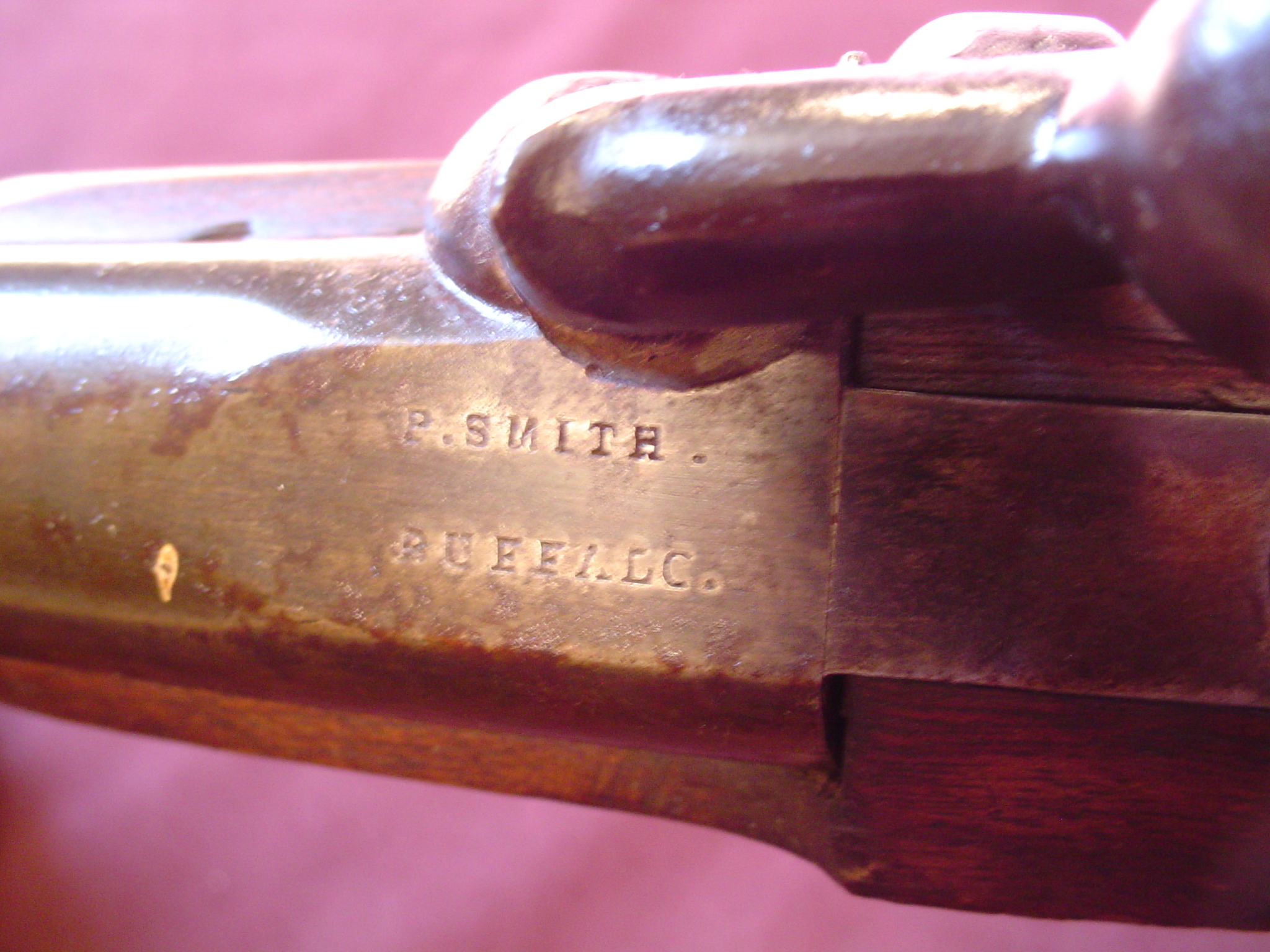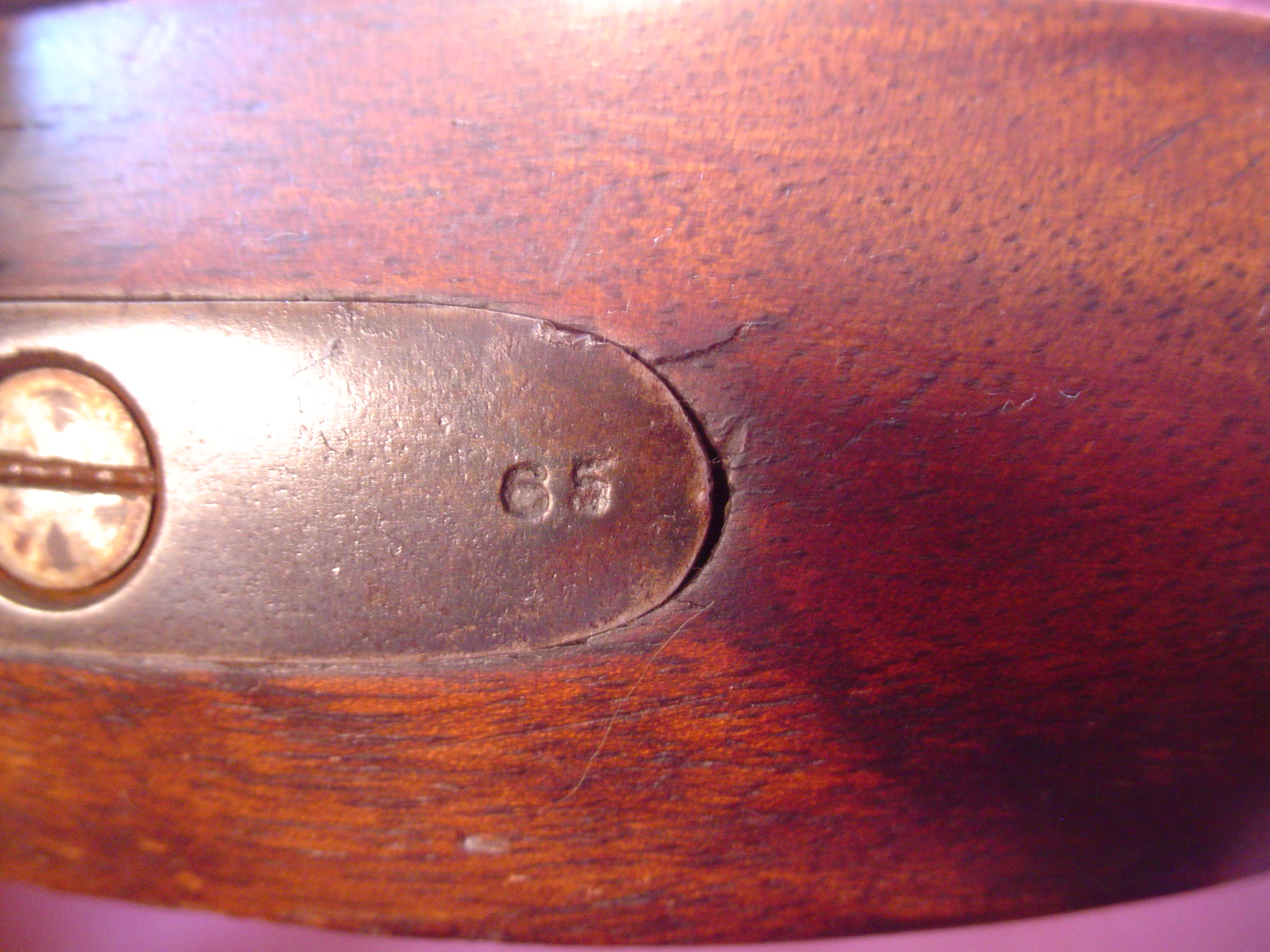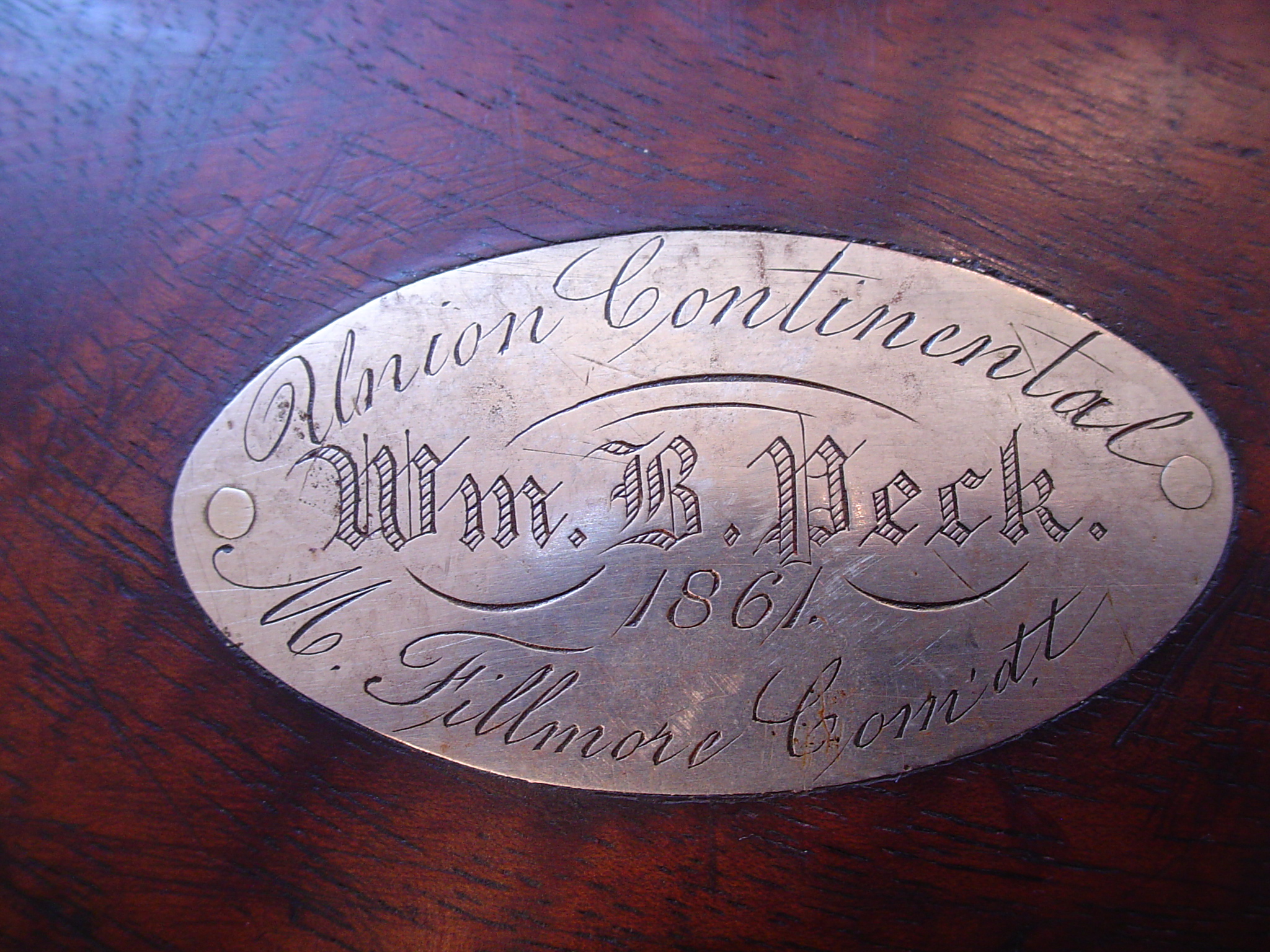By Larry B. Schuknecht

This page is dedicated to “Doc” Spink, a lifetime Patrick Smith collector and the spark plug that keeps the Students of Swinney fired up about the study and collecting of New York State guns and gun makers .
Patrick Smith of Buffalo, N.Y. was one of the most versatile gun makers of that city with a career that spanned forty-six years. He began his business at a time percussion muzzle loading guns prevailed and before he passed away saw the successful development of the breech loader. He produced the usual percussion half stock rifles and fowlers, side by side rifles, shotguns, combination guns and heavy target rifles. He perfected a tandem load single barrel rifle which was made in small numbers. He also produced a limited number of single shot breech loading rifles based on designs patented by his employee Jarvis Davis.

Patrick and his wife Bridget were both born in Ireland and immigrated to this country at an early age. It is not known where he learned the gun making trade but it is possible that it was in Ireland. According to the 1860, 1870 and 1880 U. S. Census records he was born in 1809. The 1850 Census gives his age as 50 or a birth date of 1800. In light of the other Census records it is likely that the 1850 report is in error. Bridget’s birth is consistently given as 1811.

After the Erie Canal opened in 1825 the city of Buffalo became a thiving hub of activity with people and goods passing through on the way west. Robert W. Bingham states in his book Early Buffalo Gunsmiths that “Patrick Smith opened a gunsmithing establishment on Commercial Street near Main in the year 1835”. He probably opened his business earlier than that as Bingham records the following gunsmiths working for him in 1835- William M. Hall, Jabez Haight, Henry Leonard, C. Seeal, Harvey Wakeman and Henry Wright. With six employees it was a well established business by 1835. On Sept. 24, 1833 Patrick Smith of Buffalo was listed in an ad of Elijah Snell of Auburn, N.Y. as a gunsmith who used Colburn’s Patent Side Locks.
According to the New York Alien Residents 1825-1848 Patrick Smith of Buffalo, Erie Co., N.Y.-Gunsmith became a naturalized citizen on Dec. 22, 1834. Bridget Smith of Niagara County was naturalized on Jan. 7, 1835.
Over the years the Buffalo City Directories show that other Patrick Smith employees were George Zittle-1836, John Ashfield-1844, Peter Deffery-1844 to 1850 and Fred Dick-1853.
By 1844 the work force had changed with several of the first employee’s going out on their own, and four members of a family named Davis coming to work for Smith. They were Jacob, James N., Jarvis and Ebon B. It is not presently known what if any relationship they had to each other and to Patrick Smith but I assume there was some family connection between all of them and perhaps the Davis’ were related through marriage to Smith. Of the Davis boys the one who stands out is Jarvis. He worked for patrick Smith for over 26 years and possibly as many as 36 years.


Patrick Smith’s shop and store was in the Birchhead Building on Commercial St. Until 1854 when he moved to 127 main St. In late 1864 or 1865 a building at 189 Main St. known as Gothic Hall became available after it’s builder and owner- William A. Carland died in a fire at the Clarendon Hotel. It had been built in 1843 as a factory for the manufacture of ready-made mens clothing. Patrick Smith seized the opportunity to purchase this distinctive building and here he operated his shop until he sold it to one of his last employee’s- Salem LeValley around 1880.

A receipt dated 1871 states that his store was a depot for Colt, Remington, Manhattan, Smith & Wesson, National, Sharps, Elliot and other revolvers. It goes on to state that he was a dealer in Guns, Rifles, Pistols, Gun Material, Cutlery, Fancy Hardware, Fishing Tackle, Skates, Percussion Caps, Wadding and Sportsmen’s articles generally.
Bingham states that Patrick Smith passed away on Dec. 12, 1881 at the age of 73.
The following images of Patrick Smith guns are from the New York State Firearms Trade by H. J. Swinney which was compiled by Mr. Tom Rowe and are courtesy of Mr. Rowe.













In 1861 with the outbreak of the Civil War a group on prominent well to do citizens of Buffalo formed a Militia group known as the Union Continentals. These gentlemen were past the age of service in the New York Volunteer Regiments and their function was ceremonial and as guard duties. Past President Millard Fillmore was the unit’s Commandant. Their most significant roll was to serve as the body guard of President Abraham Lincoln’s funeral procession as it traveled through Buffalo on the journey to Springfield, Ill. in April 1865. Patrick Smith created 100 special 58 caliber half stock rifles for the Union Continentals. Each rifle was numbered on the Breech Block tang and a German Silver plague on the right side carried the name of the owner.



Jarvis Davis-
The U.S. Census reports for 1860 and 1870 shows that Jarvis Davis was born in England around 1818. His wife Eliza was born in Vermont and they had one daughter-Adell who was born in New York state in 1846. The 1842 edition of walker’s Buffalo City Directory is the earliest Directory which shows Jarvis as a Gunsmith working for Patrick Smith. In the 1849-1850, 1850-1851 and 1851-1852 Commercial Advertiser Directories his home is listed as above P. Smith’s shop. The directories for 1853 and 1854 show a home address but in 1855 he is again shown residing over the Smith store and shop. In 1859 he was also the Buffalo City Assessor. As is shown by his five patents issued between 1863 and 1870 he remained close and active with Patrick Smith. All of the patents were assigned to Patrick Smith. By the time the 1880 U. S. Census was taken Jarvis and Eliza had moved to New York City and he was listed as a Manufacturer of Mineral Water.
The Jarvis Davis Patents–

On January 27, 1863 Jarvis was issued U. S. Patent no. 37,544, his first patent for a breech loading rifle action. The rifle had a falling block action which was basically the same as the Sharps. This rifle appears to be designed to fire a rim fire cartridge. The unique features of the design were a breech block which was slotted to allow the head of the hammer to pass through it, and when the action was opened the hammer would pass through the slot. Also the hammer head was fitted with a spring loaded hook whichcaught the cartridge rim extracted the case when the hammer was cocked. In 1952 Mr. Holman J. (Jerry) Swinney examined item no. 251155 in the Smithsonian Institute which is one of these rifles. Another rifle based on this patent was shown in the Weisz Antique Arms Portfolio of 1955, item no. 12.

Five months later on July 7, 1863 Jarvis was issued U. S. Patent no. 39198 for an Improvement in Breech-loading Fire-Arms. This patent covered an action with a side hinged breech block. The features covered by this patent was a hooked bar linked to the hammer which caught and extracted a shell casing when the hammer was cocked. Also the cylindrical breech block had a groove in its bottom which sat on the hooked bar which was spring loaded underneath. When the breech block was closed it forced the hooked bar down and away from engagement with the rim of the case allowing the hammer to be cocked.


Jarvis continued to improve his design and on April 26, 1864 he was issued U. S. Patent no. 42,529 which covered improvements to the previous patent. It covered the hooked bar as being one piece, and a “U” shaped spring which was mounted in the action below the Breech Block. One end of this spring bore against the breech block hinge thereby forcing it either fully open or closed. Also this patent covered an Expansion Breech Pin (Jarvis Davis’ term) which fit the chamber and incorporated a nipple and percussion cap to allow the rifle to be used as a muzzle loader when fixed ammunition was not available. Patent drawings for no. 37,544, no. 39,198 and no. 42,529 all show rifles with a Cleaning-Ram Rod. The rifles made on the designs of patents no. 39,198 and no. 42,529 are often compare with the Warner-Greene carbine which is very similar. One of these hinged breech block rifles is known to exist in excellent condition and is shown in The New York State Firearms Trade Volume 4, page 1516 and a second example with with a broken hammer spur was rumored to be in the Utica, N.Y. area.

The fourth design that Jarvis patented was a radical and innovative one which combined a bolt action with a falling block. On Nov. 28, 1865 he was issued U. S. Patent no. 51,258 for this design. It featured a spirally grooved sleeve with a finger lever or bolt handle which lowered the breech block and slid the extractor when it was rotated. The design was well thought out and practical but no examples of it are known to exist.

Jarvis’ last patent was no. 103,154 which was issued on May 17, 1870 for a break action design wherein Jarvis returned to basics with a proven system long used by Maynard, Wesson and others. The features protected by the patent are a spring loaded lever on the side of the receiver which engages the barrel to lock it closed. A plunger with a coil spring which bears against the lever, passes through the stock and is in line with a mating hole in the outside hammer when the hammer is at half cock. This feature prevented the opening of the rifle with the hammer in either the down or full cock position.
Following the Patent drawings are images of the only known example of the Patrick Smith-Jarvis Davis Break Action rifle that I am aware of. It is chambered for the 44 Rim Fire round with a 28 1/2 inch barrel that is 1 inch across the flats at the breech and 7/8 inch across the flats at the muzzle. The extraction was manual with a tab that extended out from the right side of the breech. It has a hooded front sight and a folding Lollipop tang sight. It has no serial number so it is difficult to determine how many were made.










